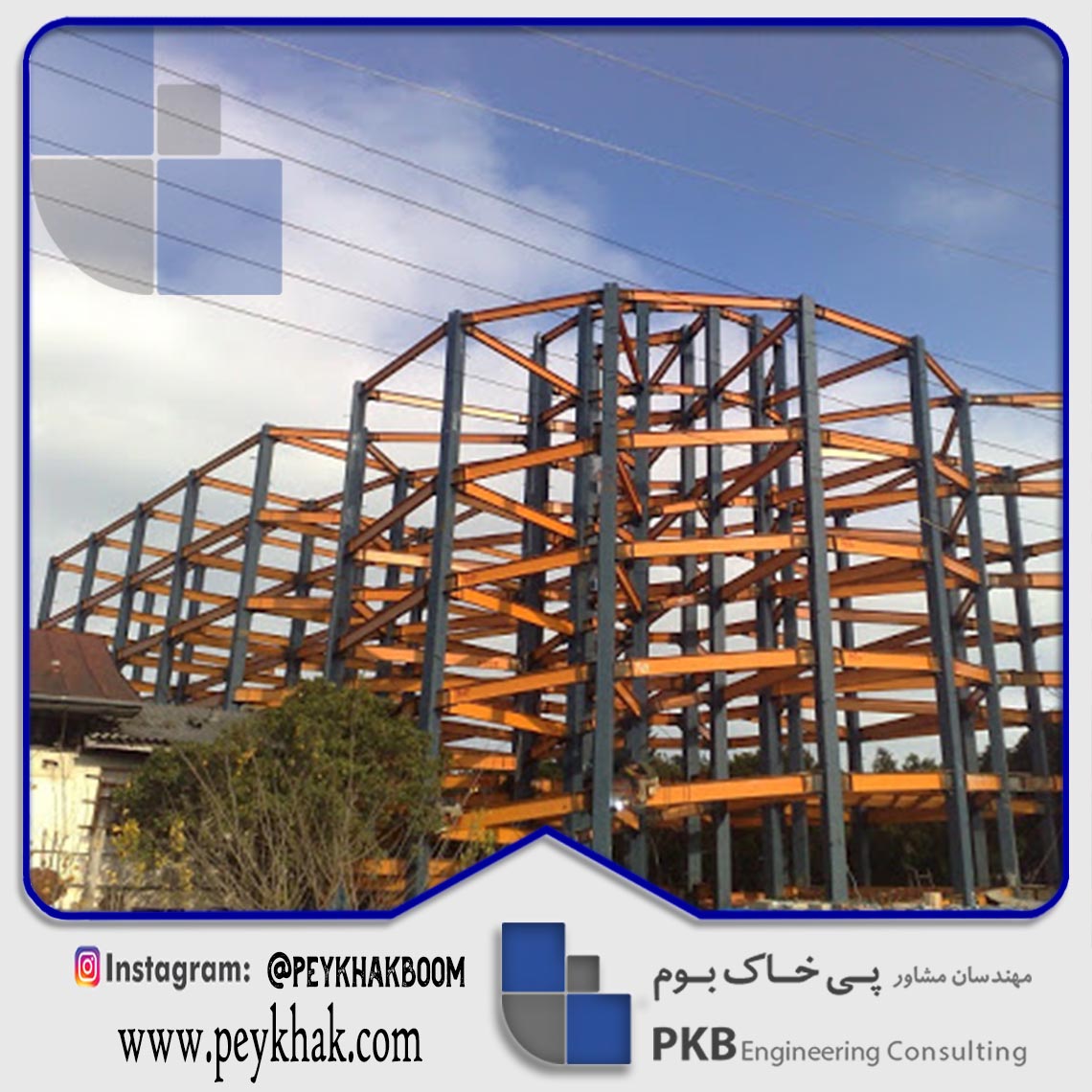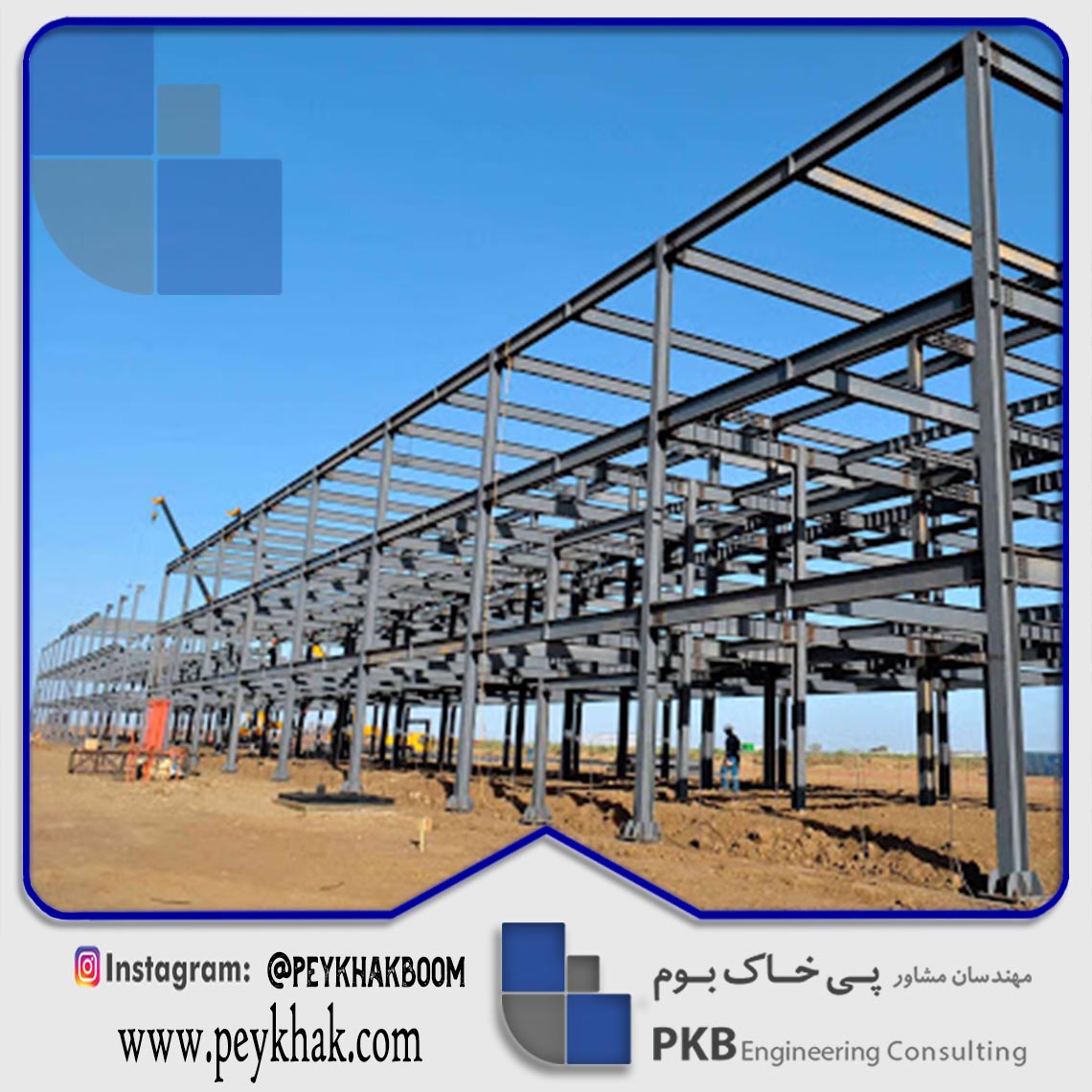Steel and concrete skeletons are two ways of implementing a building, each having its own advantages and disadvantages. To choose the type of building skeleton, the arithmetic engineer must consider many things. Issues such as economic factors, performance conditions, climatic characteristics of the site, quality of performance, structural technical factors as well as employer requests.
Without considering the above, as well as examining the construction properties with steel or concrete skeletons, it is not possible to make a definite and accurate decision on the type of skeleton. Choosing the right skeleton for a building is very important, since it is impossible to change it after the beginning of the construction process unless the previous skeleton is destroyed.
What is a building with a steel structure?
A steel structure, also known as a steel structure or steel structure, is a set of bearings made of steel profiles or sheet metal that are connected by means of joints. Because the steel profiles have evolved and undergo a lot of trial and error, these sections often exhibit favorable behavior.
An important issue in these structures is the behavior of the joints used to construct composite members and sheets at the site of the nodes.
Conventional methods of fitting in steel structures are as follows:
Fittings for bolted steel structures
welded joints
Riveted joints (which are obsolete in almost all parts of the world.)
History of steel structure
The use of steel structures in buildings has a long history. Initially cast iron was used to carry out such structures, but after a while low-carbon iron or hammer iron was replaced. Structures of various designs and shapes were made possible using steel frameworks.
Iron and low-carbon iron have also gradually replaced steel. Today, steel is the most widely used steel structure in buildings, where it is sometimes used instead of the term “steel framework”.
The advantages of the steel structure make it widely used in the construction of niches and large buildings. This type of skeleton is also applicable in the busiest and least crowded places, so it is well received by major architects and structural engineers in major cities. The steel frame improves the quality of the construction and reduces the discomfort of the materials.
The best way to implement bolts is metal and European countries do not allow the use of welded joints except in light weight and because they are less resistant than bolts.
Benefits of steel structure for building
The advantages of using metallic struc- tures include:
The steel frame is less weighted than the concrete frame, thus reducing the overall weight of the building.
The elastic properties of steel are very good with practical application. Steel, in reality and outside of laboratory conditions, adheres to Hooke’s law to great stress.
The strength of the metal parts is high and its weight-to-weight ratio is higher than that of concrete, which is why it is widely used in large openings in niches and high-rise buildings as well as buildings run on loose ground.
The steel structure is very suitable for long structures.
Since the metal is manufactured in large, closely supervised factories, its properties can be assured of uniformity.
The durability of steel is very good. If steel buildings are properly maintained, they will be usable for a long time.
One of the positive properties of metal materials is their high plasticity. This feature makes the metal material withstand the stress concentration that is actually the cause of the breakdown, as well as the dynamic and impact force.
The metal parts are continuous and homogeneous depending on the materials they make.
The steel frame building is better resistant to explosion. The destructive force of the blast separates the barrier surfaces from the skeleton and reveals destructive energy, but the building will not be completely destroyed.
The steel structure is reinforced and retrofitted. If for any reason such as miscalculation, change of rules, improper execution, etc. the skeleton does not have the desired strength; it can be welded, riveted or screwed to new parts or added to parts.
Conditions of construction and implementation of the steel structure are simple.
The speed of metal parts installation is faster than that of concrete components and takes less time.
Because the metal parts are made from the factory, the material is less than the concrete frame.
In two identical buildings in height and dimension, the columns and beams of the metal buildings are smaller and smaller than the concrete buildings. For this reason, the level of occupancy or dead space in concrete buildings is higher than in metal buildings.

Disadvantages of Steel Frame
The disadvantages of a steel structure may be shorter than its advantages, but consider the following when designing a building and choosing the appropriate structure:
Weakness at high temperatures and during fires: Building resistance with steel skeletons will decrease with increasing temperature. If the metal temperature reaches 500 to 600 degrees Celsius, the building’s equilibrium and stability will be compromised.
Corrosion and Corrosion of the Metal against External and Atmospheric Factors: Consumables in the metal building are corroded against the atmospheric agents and their dimensions and strength are reduced; therefore, the cost of maintaining and protecting these structures is greater than that of concrete structures.
Bending Pressure Components: Due to the large number of consumed metal parts and their dimensions are usually small, the tendency to buckle in these parts is a disadvantage.
Improper welding: Welding of metal parts by welding may be inappropriate and ineffective. The lack of skill of welders, the use of old machinery, the inadequate control by supervising engineers, the cost of welding testing, and so on.
High initial cost: In steel buildings, a large part of the cost of construction must be paid at the outset to purchase metal parts. In recent years, due to the steady rise in the price of these materials and the declining purchasing power of the designer or implementer, there has been a decline in steel building construction in Iran.
What is a building with a concrete structure?
Concrete structure or concrete structure is a structure made of concrete or reinforced concrete (consisting of cement, sand, sand and steel in simple or ribbed rebar). If concrete was used to run the building and in the columns, masts, and foundations, it would have a concrete structure.
In a concrete-skeletal building, members of the reinforced concrete press barber are molded and executed at the structure. In these buildings all main beams and even shear walls are made of concrete.
Concrete skeleton has its advantages and disadvantages that should be chosen according to the type of building, the place of construction, access to construction materials and their prices, the use of the building and the climate and geological characteristics of the area.
In a concrete structure, these sections are constructed and executed with concrete:
Foundations and Foundations
column
The main beams
Side beams
Step
Shear wall
ceiling
History of concrete structure
In the initial definition of concrete it is said that this material is a bonding material, which is usually the result of the interaction of hydraulic cements and water. Given this definition, the first use of such materials can be traced back several centuries. But the construction and implementation of concrete, as we know it today, goes back to the early 20th century.
Concrete, like all other materials and materials in the construction industry, is constantly improving its quality and efficiency, and every day we see different performances of this material, especially in bridges and dams.
Benefits of Concrete Skeleton
The use of concrete skeletons depending on the type of building, construction budget and location can include the following benefits:
All concrete constituents are considered to be cheap, native materials. Ready-mixed concrete can also be purchased with different qualities and specifications.
Concrete can be easily customized to any desired shape. Simply prepare the right mold and then produce almost any structural section and architectural form with reinforced concrete. This is one of the advantages of concrete over steel, as steel is manufactured in the factory in limited and distinctive shapes and sizes.


